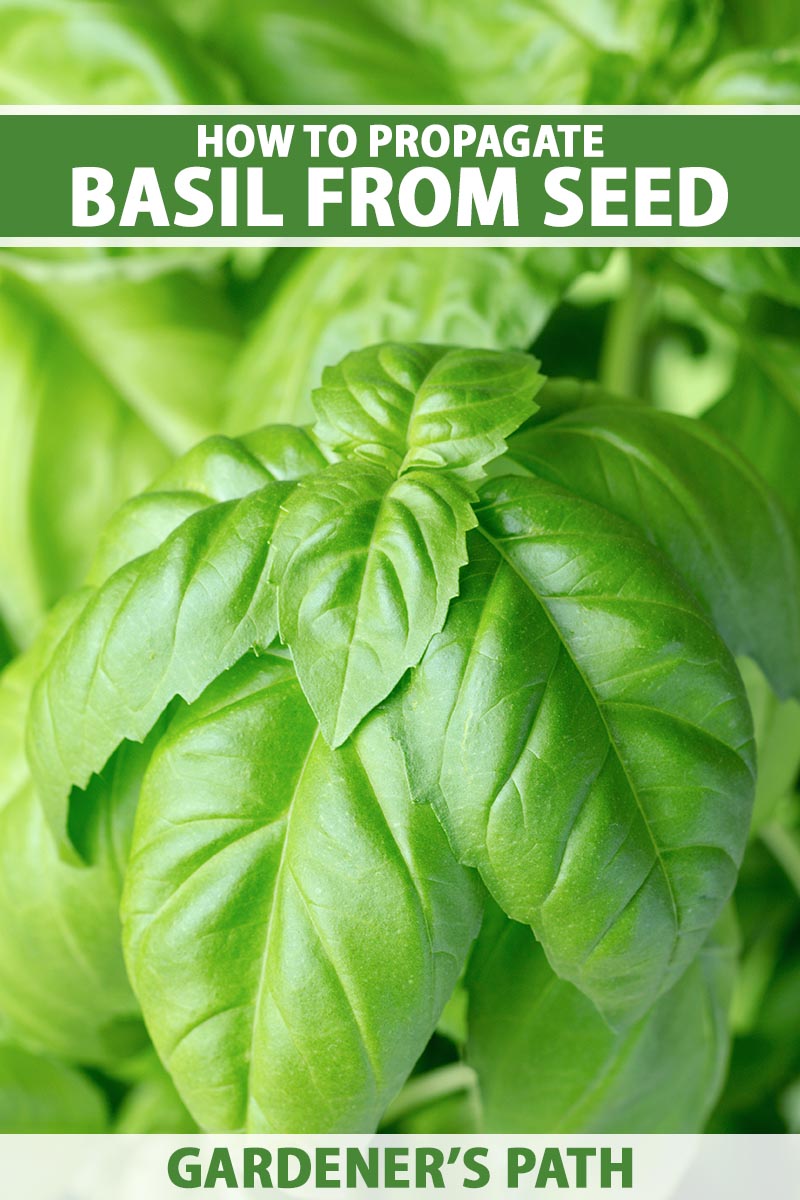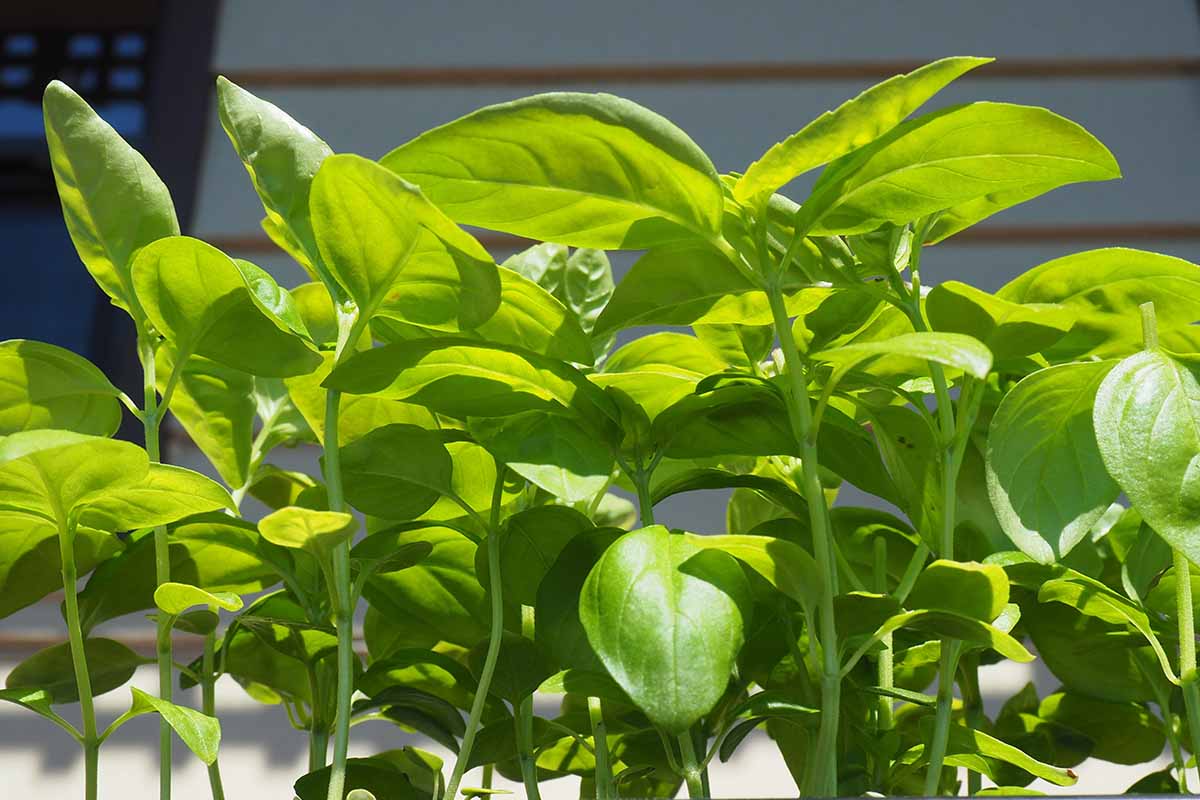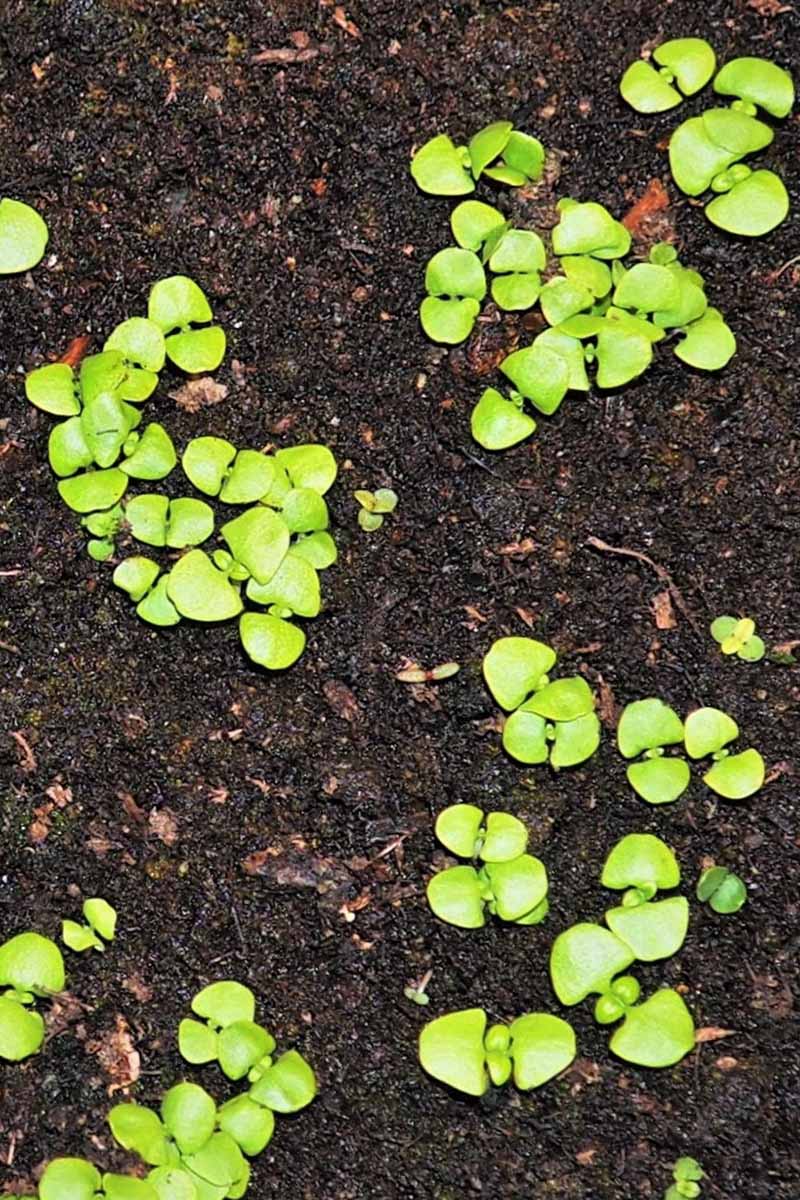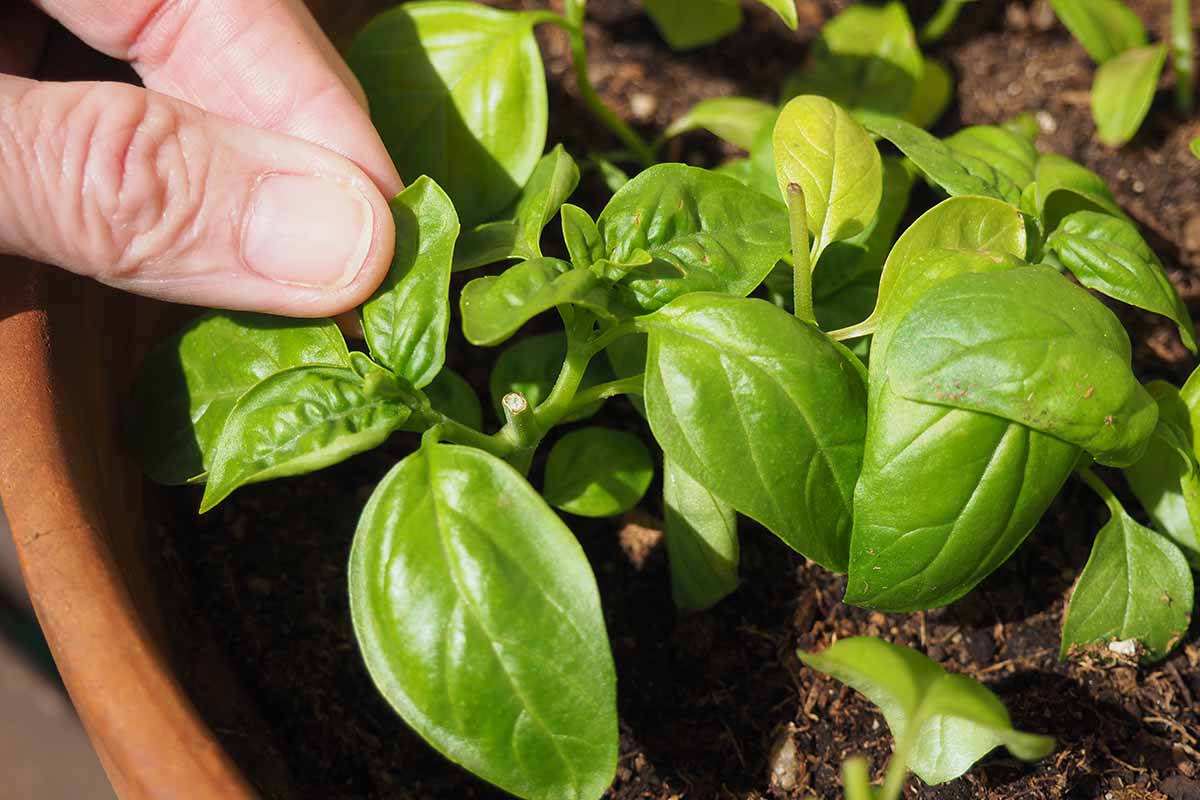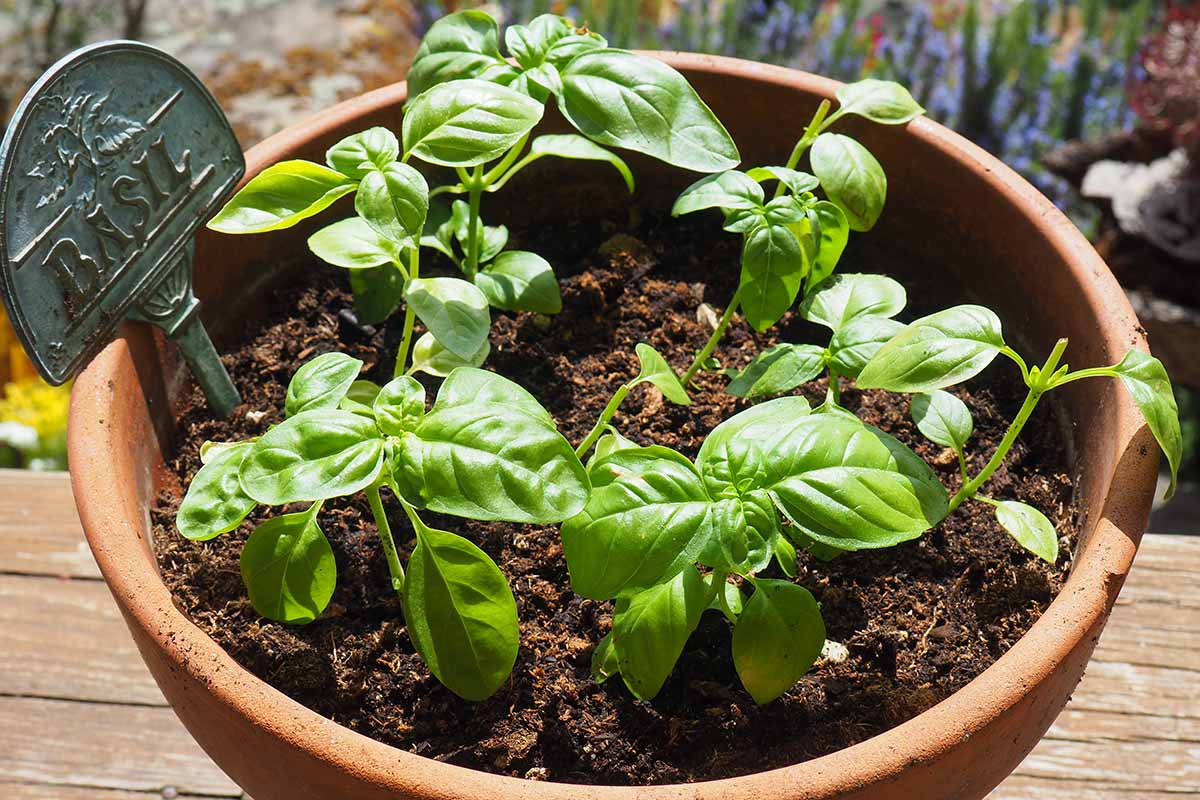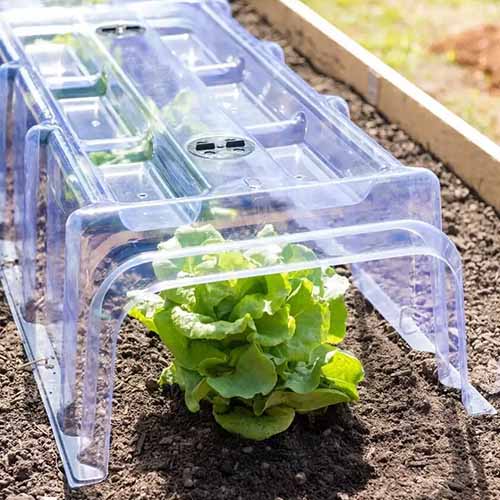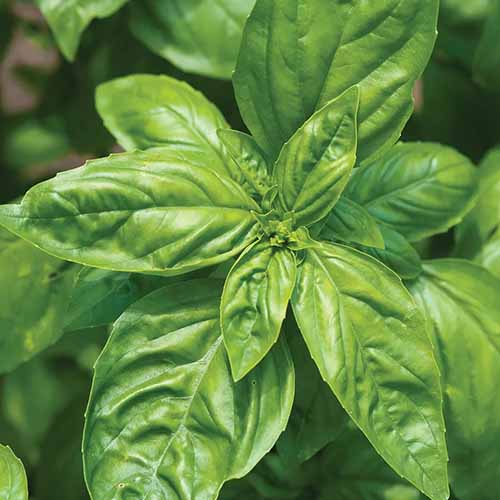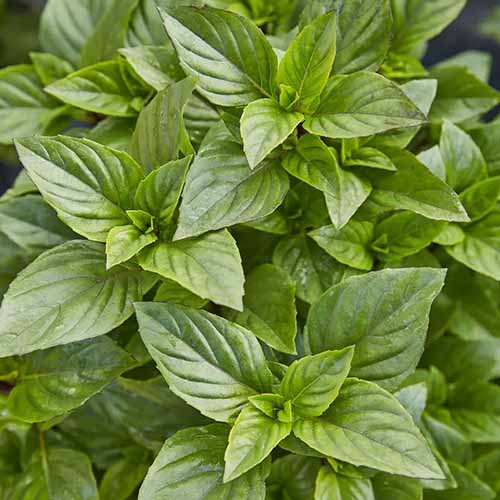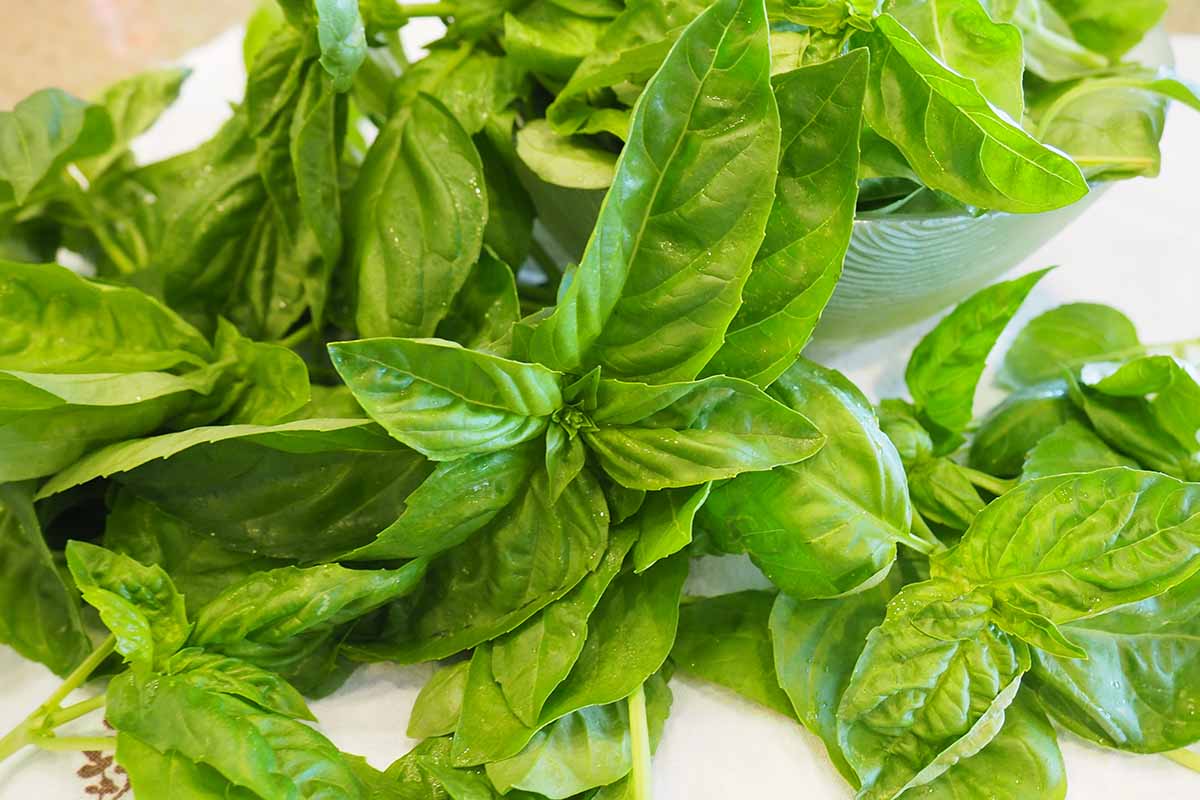Many different varieties are available for home gardens, each with their own unique charm and characteristics. We link to vendors to help you find relevant products. If you buy from one of our links, we may earn a commission. Whatever type you choose, it’s always a good idea to plant in succession – these flavorful leaves disappear fast and you don’t want any lulls in production! Start early crops indoors, then direct sow seeds outdoors once consistently warm temperatures arrive. Growing your own is easy, rewarding, and economical too – and you’ll be enjoying the first harvest just a few weeks after sowing! So, if you need more flavorful herbs in your life, let’s jump into the details on how to grow basil from seed. Here’s what we’ll cover:
When to Start
Basil plants are members of the Lamiaceae or mint family, tender heat-lovers native to tropical regions of Africa and Southeast Asia. In the garden, they require warm soil and full sun. To direct sow in containers or garden beds, wait until overnight temperatures remain above 50°F – usually from mid-April to early June, depending on your region. Seeds germinate in temperatures between 50 and 70°F, and they definitely germinate and sprout better at the warmer end of that temperature range. Cool, damp conditions are the bane of basil seedlings, and can cause fatal problems like damping off. To get ahead of the weather, seeds can be started indoors provided they receive adequate light and warm temperatures. Heat mats and grow lights can help to create these conditions. Start indoors three to four weeks prior to your last expected frost date, then transplant out when temperatures are right.
Tips for Sowing Seeds
The optimal temperature for seed germination is 70°F. For indoor sowing, fill trays with a moistened starter mix that’s been brought to room temperature if it was stored somewhere chilly or you used cold water. Sow seeds lightly on top of the soil then cover with a scant half inch of soil. Firm the soil with a light touch. Moisten the soil with a gentle stream of water to avoid disturbing the seeds, or provide bottom watering. Place trays in a bright, warm location or under grow lights. Ensure the soil stays slightly moist but not wet. For outdoor sowing, plants must receive at least six hours of full sun each day in a well-draining site. In beds or containers, prepare a rich, loamy soil with a slightly acidic to neutral pH of 6.0 to 7.5. Amend the soil with plenty of organic matter such as compost or aged manure and add some landscape sand or pea gravel to improve drainage if needed. Mix in some bone meal for healthy root growth. Sow seeds lightly on top of the soil and cover with one-half inch of soil. Water gently and keep the soil moist but not wet. Germination takes five to 10 days and the first sprouts will appear as a set of D-shaped leaves.
Seedling Care
Once seedlings are two to four inches tall, thin to one inch apart. When they’re four to six inches tall, pinch out the tops to promote branching and bushiness, cutting the stem just above the second set of leaves. As mentioned, seedlings are prone to damping off. This is a soil-borne fungal disease prevalent in cool, wet conditions that causes stems and roots to rot and collapse at and below the soil line. To minimize the chances of damping off, use a sterilized soil mix, provide bright light for six to eight hours daily, and ensure ambient temperatures are between 50 and 70°F. Also, provide plants with adequate air circulation – for indoor seedlings, you may want to use a small fan on its lowest setting to provide a gentle breeze.
Transplanting to Containers or Garden Beds
After plants have received their first pinch and overnight temperatures are consistently above 50°F, transplant to containers or garden beds. Give plants a full-sun location in well-draining soil enriched with plenty of aged compost or well-rotted manure. Add a sprinkle of bone meal to the soil for healthy root development. For potted plants, containers should be a minimum of six inches deep and wide and all planters require drainage holes – basil does not do well in wet soil. I like to add a layer of drainage material over the holes such as pebbles or broken pottery. In garden beds, space plants eight to 12 inches apart in mounded rows or hills. Basil enjoys moist, but not wet, conditions and the soil must be well-draining to prevent roots from standing in water. A two- to four-inch layer of leaf mold, pea gravel, or straw mulch can help to retain moisture around the roots. Container plants benefit from more frequent feeding, provided every two or three weeks over the growing season – but at this frequency, fertilize at a half-strength dilution. As mentioned, plants struggle at temperatures below 50°F. Cool Weather Row Cloches If cool temperatures set in, protect the your seedlings with a cloche or row cover on cold nights – like these reusable cool-weather row cloches that are available at Gardener’s Supply Company.
Cultivars to Select
Seeds for numerous varieties are available at garden centers and online, and our guide to 13 favorite basil varieties has some unique selections for you to try out. Here are a few options to get you started: ‘Genovese’ Seed packets of the perfect-for-pesto ‘Genovese’ variety are available at Burpee or you can purchase seed in bulk from Eden Brothers. ‘Dark Opal’ For something a bit different, organic ‘Dark Opal’ is a purple-leaf variety. Seeds in packets or in bulk are available at Eden Brothers. ‘Corsican’ ‘Corsican’ is an heirloom Mediterranean variety with both purple to green leaves. Seeds are available at True Leaf Market. Thai Packets of spicy Thai basil seed can be purchased at Burpee and True Leaf Market. Lemon And lemon basil seeds in packets or in bulk can be found at True Leaf Market.
An Abundant Harvest
Easy and fast-growing, you’ll love how rewarding propagating basil from seed is. Enjoy these tasty, tender herbs at any time of the year by sowing indoors. Or make successive plantings outdoors for an abundant harvest of leaves in spring and summer. What basil varieties do you folks grow from seed? Tell us in the comments section below. And for more information on growing basil in your garden, read these guides next:
How to Grow Basil in Your Herb GardenKeeping Basil When It Gets Chilly: Fall and Winter Growing TipsHow to Harvest and Save Basil Seed
